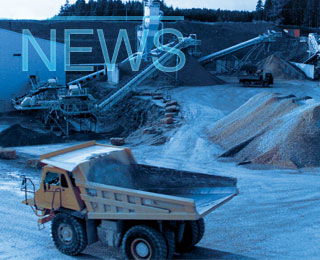S R Gnanam, Joint Managing Director, Tokyo Cement Group at the celebrations to mark the ’Tokyo Cement’ crossing the One Million ton cement selling target, which was never before achieved by any other company in Sri Lanka, at a ceremony a ceremony at the Colombo Hilton Hotel said that the Company was recreated through the ashes of destruction as on 20th May 1986. He added that the company was shut down and kept closed for two years due to extensive damages caused to the factory at Trincomalee by unknown miscreants.
He said that the Company was started in 1983 with Japanese investment and got the best use of the natural resources of Trincomalee harbor. It was a journey worth celebrating as the 2005 Calendar year was finished with a 1,079,000t which made ’Tokyo Cement’ the market leader for cement in Sri Lanka. This was jointly achieved by their operations both in Trincomalee contributing 68 percent and Colombo contributing 32 per cent. The sales are made up of 63 percent bulk sales and 24 percent bag sales in 2005.
As there was the civil unrest in Sri Lanka in 1984, Tokyo Cement was operating far below capacity and due to unsuccessful IPO and earlier they have approached several banks to underwrite their issue and as they were turned down, the family had to underwrite the issue.
He said that from 30tph in 1984 they have now risen up to a capacity of 840,000t per annum and is expected to increase this figure to a total of 1,800,000t per annum in 2007 from Trincomalee alone. The Colombo terminal commenced in 2001 and the capacity today is 650,000t.
Commenting on the cement business in Sri Lanka he said that Sri Lanka had a growth rate of 16.5 percent in 2005 when compared to four per cent in 2004 and a volume increase from 3.2Mt in 2004 to 3.7Mt in 2005. The growth was due to the revival of several irrigation projects, development of apartment buildings, rebuilding and construction work in the North and East, Tsunami relief work.
Duminda Dissanayaka, Deputy Minister of Foreign Affairs reading his Minister’s message said that cost effective, energy efficient and environment friendly technologies were the prime mover for the viability of the country’s industry to survive and to grow to meet globally increasing market challenges. To achieve this objective, the country needs large quantities of all the construction materials including cement at affordable price for the reconstruction and redevelopment of war affected North and East provinces and the Tsunami ravaged areas.
